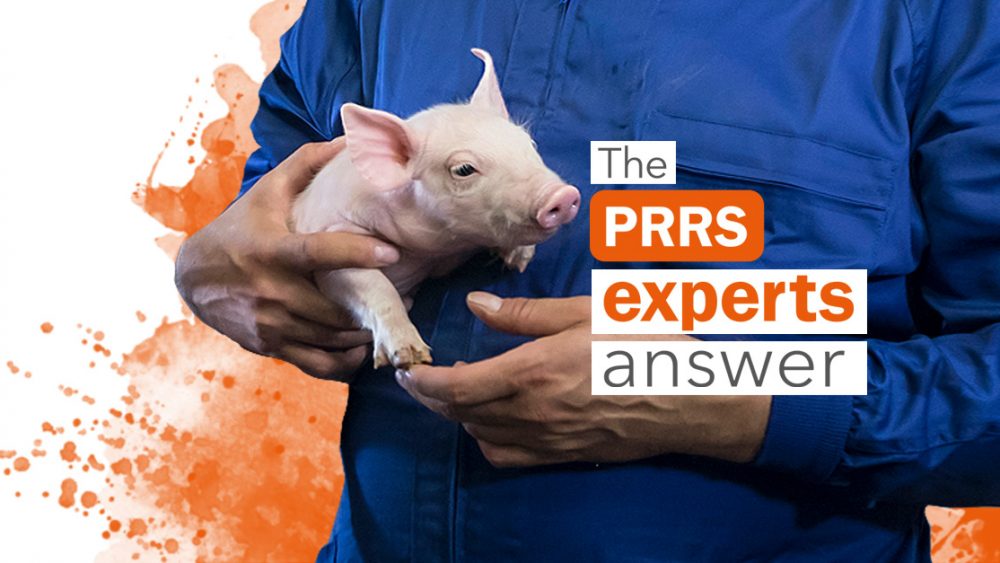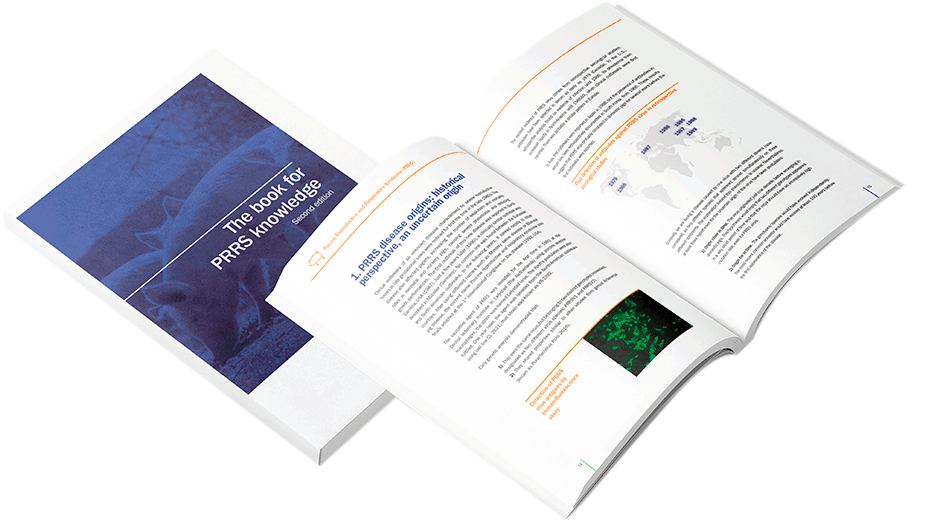There are several routes of PRRSV introduction into herds. Most common ways of PRRSV transmission within and between herds include infected pigs (Bierk et al., 2001) and contaminated semen (Yaeger et al., 1993; Christopher-Hennings et al., 2001); these are also called direct routes of transmission.
In addition, PRRSV has been shown to be transmitted indirectly via contaminated fomites, personnel, or insects as well as through aerosols (Cho and Dee, 2006; Otake et al., 2010). Also, transport vehicles have been proven to act as mechanical vectors for PRRSV transmission (Dee et al. 2004).
A group of American researchers led by Dr. Scott Dee has investigated different sanitation protocols for transport vehicles including a combination of disinfection and drying in order to prevent PRRSV introduction into herds through contaminated transport vehicles (Dee et al. 2005a; Dee et al. 2005b). Of course, preventing potentially PRRSV positive transport vehicles to access a farm area can reduce the risk of PRRSV introduction into herds.
This is particularly true for “foreign” transporters, i.e. transporters that are not owned by the production unit and also transport pigs from other sources. One way to prevent transporters from approaching a farm might be the use of a loading bay located in some distance to the barns; an internal transporter should be used to transport pigs to and from the loading bay.
Ideally, the outside area of the farm is fenced in and internal transporters never leave the fenced area (black and white system).
REFERENCES:
- References Bierk, M.D., Dee, S.A., Rossow, K.D., Otake, S., Collins, J.E., Molitor, T.W., 2001. Transmission of porcine reproductive and respiratory syndrome virus from persistently infected sows to contact controls. Canadian journal of veterinary research 65(4), 261-266.
- Cho, J.G., Dee, S.A., 2006. Porcine reproductive and respiratory syndrome virus. Theriogenology 66(3), 655-662.
- Christopher-Hennings, J., Holler, L.D., Benfield, D.A., Nelson, E.A., 2001. Detection and duration of porcine reproductive and respiratory syndrome virus in semen, serum, peripheral blood mononuclear cells, and tissues from Yorkshire, Hampshire, and Landrace boars. Journal of veterinary diagnostic investigation 13(2), 133-142.
- Dee, S.A., Deen, J., Otake, S., Pijoan, C.,2004. An assessment of transport vehicles as a source of porcine reproductive and respiratory syndrome virus transmission to susceptible pigs. Can J Vet Res 68:124–33.
- Dee, S.A., Torremorell, M., Thompson, R., Deen, J., Pijoan, C., 2005a. An evaluation of thermo-assisted drying and decontamination for the elimination of porcine reproductive and respiratory syndrome virus from contaminated livestock transport vehicles. Can J Vet Res 69:58–63.
- Dee, S.A., Deen, J., Burns, D., Douthit, G., Pijoan, C., 2005b. An evaluation of disinfectants for the sanitation of porcine reproductive and respiratory syndrome virus-contaminated transport vehicles at cold temperatures. Can J Vet Res 69:64–70.
- Otake, S., Dee, S., Corzo, C., Oliveira, S., Deen, J., 2010. Long-distance airborne transport of infectious PRRSV and Mycoplasma hyopneumoniae from a swine population infected with multiple viral variants. Veterinary microbiology 145(3-4), 198-208.
You can ask your own question! Visit Pig333.com and submit your question to our experts.
Какую роль играют транспортные средства и перегрузочные платформы в том, чтобы не допустить заноса вируса РРСС на ферму?
Существует несколько путей, которыми вирус РРСС проникает на ферму. В число самых распространенных путей распространения РРССВ в поголовьях и между ними входят инфицированные свиньи (СBierk и др., 2001) и зараженное семя (Yaeger и др., 1993; Christopher-Hennings и др., 2001).
Это – так называемые, прямые пути передачи инфекции. Кроме того, вирус РРСС показал, что он способен передаваться непрямым путем, через фомиты, персонал или насекомых, а также через аэрозоли (Cho and Dee, 2006; Otake и др., 2010). Транспортные средства также являются доказанными механическими векторами распространения РРССВ (Dee и др. 2004).
Группа американских исследователей под руководством д-ра Скотта Ди (Scott Dee) изучала различные протоколы для транспортных средств, в т.ч., такой, как комбинация дезинфекции с последующей сушкой, направленных на недопущение заноса вируса РРСС в поголовья через загрязненные транспортные средства (Dee и др. 2005a; Dee и др. 2005b).
Естественно, исключение возможности для потенциально зараженного вирусом РРСС транспорта попасть на территорию фермы может значительно снизить риск его заноса в поголовье. В особенности, это справедливо для «чужих» перевозчиков, т.е., тех, что не относятся к конкретному производственному участку, а также тех, что перевозят свиней от сторонних поставщиков. Одним из путей не дать перевозчикам приблизиться к ферме может быть использование перегрузочной платформы, расположенной на некотором удалении от корпусов – для доставки свиней до платформы и от нее должно использоваться собственное, внутреннее, транспортное средство.
В идеале, территория фермы должна быть огорожена и внутренний транспорт никогда не выезжает за ограду (система «черное и белое»).

University of Veterinary Medicine, Vienna




